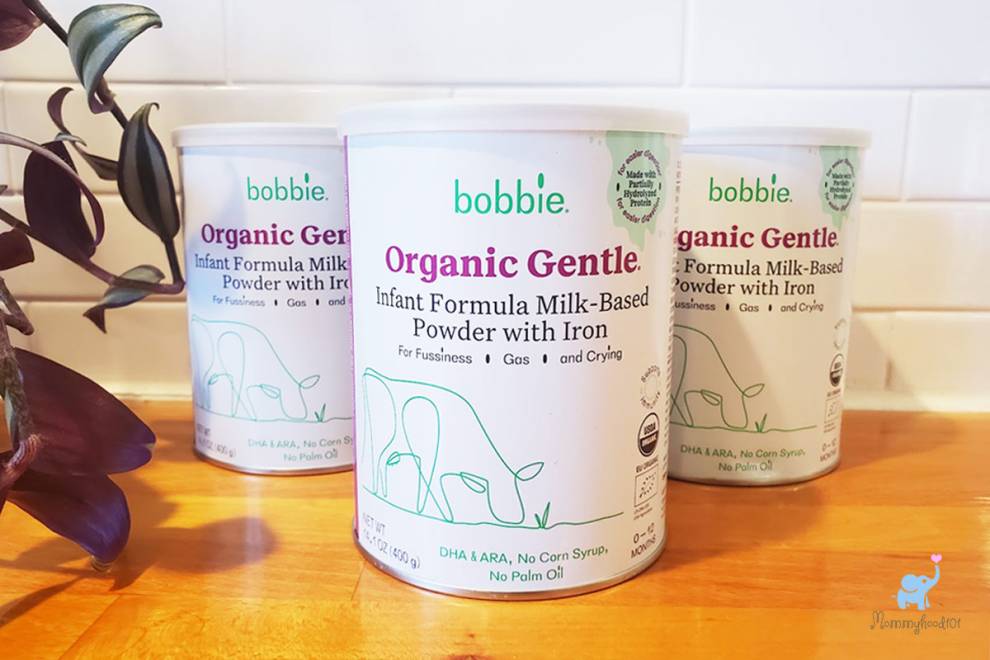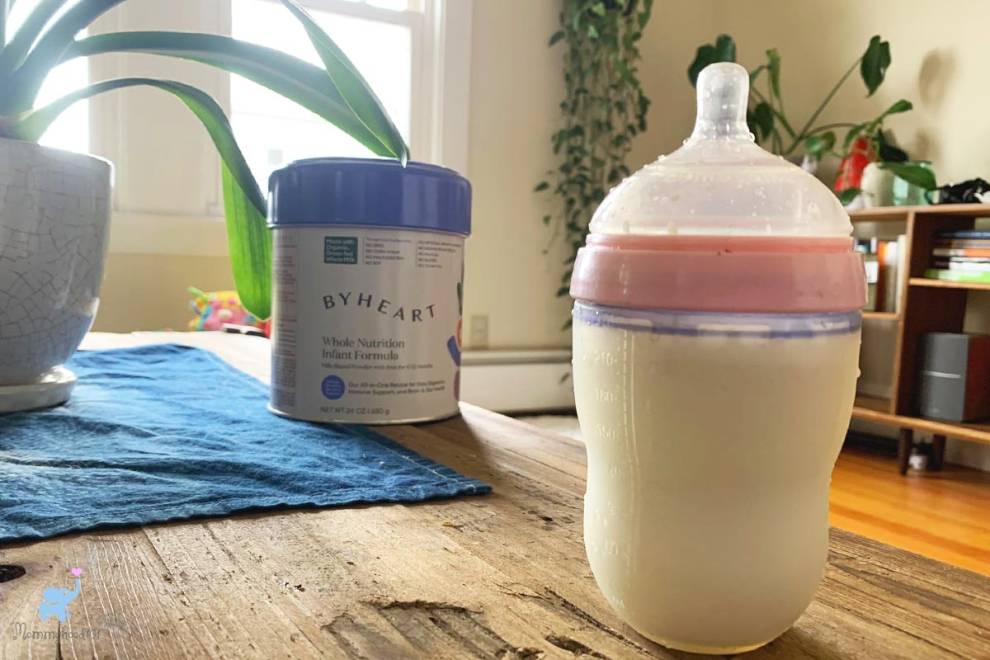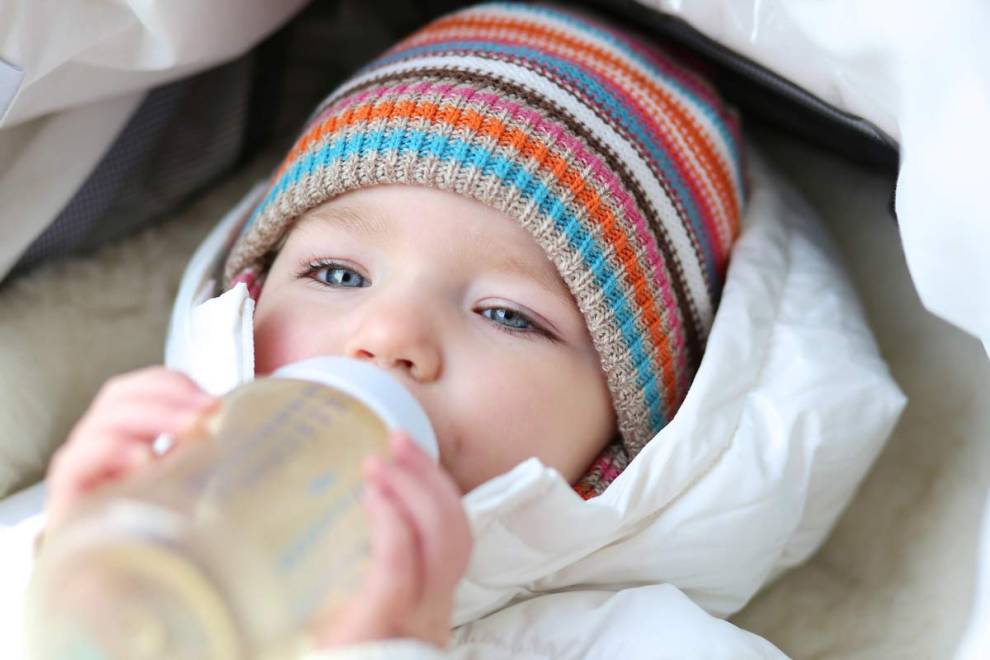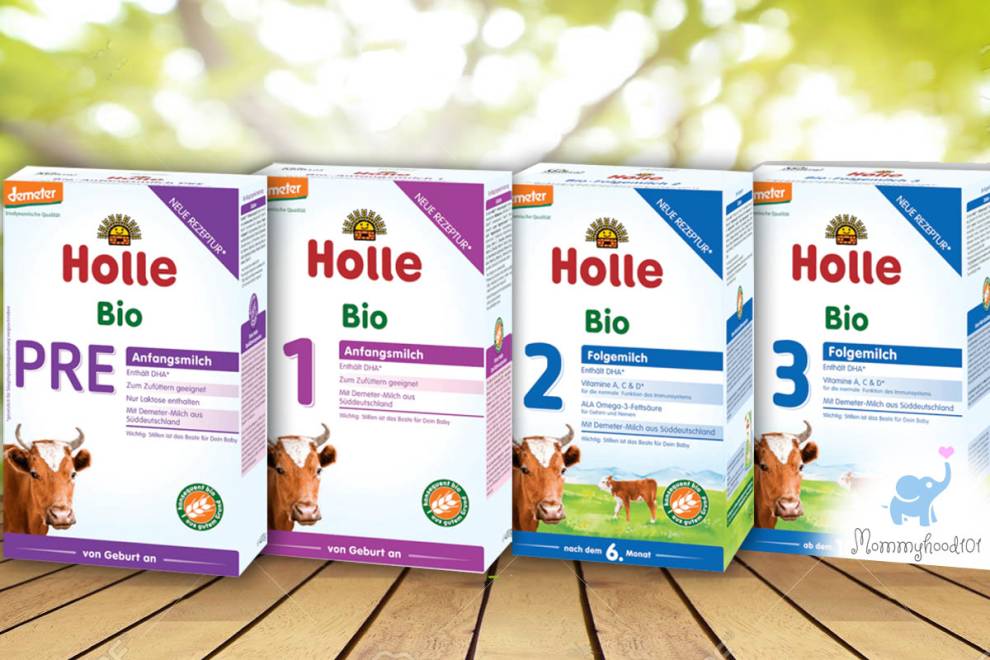From preschool through elementary, booster seats are perfect transition partners.
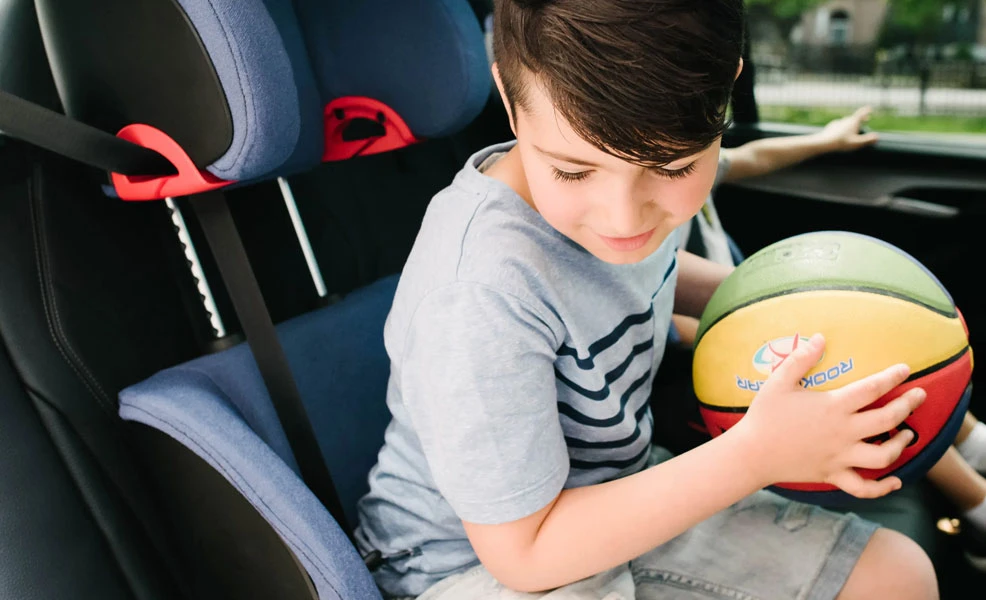
Mommyhood101 independently tests and curates baby gear to help you make informed decisions. If you buy products through links on our site, we may earn a commission.
A booster car seat keeps your child safe when they outgrow a convertible car seat but need extra support before using the vehicle’s seat and seat belt alone.
The best booster seats prioritize safety, comfort, versatility, and ease of use, ideally without a hefty price tag.
With over a decade of experience reviewing booster seats, here’s what we’d include if we designed our own:
✔️ Weight limit 80 pounds or up.
✔️ Height limit 55" or higher.
✔️ Belt-positioning mode.
✔️ Backless mode.
✔️ Weighs under 20 pounds.
✔️ Is narrower than 19".
✔️ Steel-reinforced frame.
✔️ Side impact protection.
✔️ LATCH option.
✔️ Energy-absorbing foam.
✔️ Adjustable headrest.
✔️ Removable & washable cover.
✔️ Soft & breathable fabrics.
✔️ No flame retardants.
✔️ Comfortable seat cushioning.
✔️ Easy install, adjustable recline.
✔️ Adjustable torso & side width.
✔️ Best Bet rating by IIHS.
✔️ Cup holder(s).
✔️ Dual armrests.
Of course, this doesn't even consider style and budget! That's a lot to ask, and no booster car seats actually meet all of these criteria!
-
- Top 5 Booster Seats Comparison Table
- In-Depth Reviews
- 1. Best Overall: Clek Oobr
- 2. Graco Tranzitions
- 3. Chicco KidFit
- 4. Britax Grow with You
- 5. Diono Monterey 4DXT
- 6. Graco Highback TurboBooster
- 7. Britax HighPoint
- 8. Graco Affix
- 9. Chicco MyFit
- 10. WAYB Pico
- Conclusions
- Booster versus Harness Booster
- Why Use a Booster Seat?
- Ease of Use
- Safety
- Price
- Child Weight and Height
Full disclosure: Some of these boosters, including the Graco, Clek, and Diono models, were sent to us as free test samples by the manufacturer.
Below we list the overall top 5 booster seats we've tested, followed by in-depth reviews of those and several additional options.
The Top 5 Best Booster Seats of 2026!
| ★★★★★★★★★★ (10/10) | Our top pick, this booster seat has a magnesium-reinforced frame, rigid LATCH anchors, adjustable recline, and excellent crash-test performance. Converts to a backless booster. Greenguard GOLD-certified fabrics with optional Merino Wool. We love it! | CHECK PRICES | READ FULL REVIEW | |
| ★★★★★★★★★★ (10/10) | 3-in-1 harness booster that transitions from a 5-point harness to a high-back booster, then to a backless booster. Lightweight and budget-friendly with Simply Safe Adjust Harness System and side-impact protection. | CHECK PRICES | READ FULL REVIEW | |
| ★★★★★★★★★☆ (9/10) | A highly-rated booster with DuoZone side-impact protection, 10-position headrest, and LATCH connectors. Converts to a backless booster. However, the belt-positioner can sometimes slip when the child unbuckles. | CHECK PRICES | READ FULL REVIEW | |
| ★★★★★★★★★☆ (9/10) | A harness booster with ClickTight installation, a steel-reinforced frame, and two layers of side-impact protection. Converts to a high-back booster but is heavy and large, making it less portable. | CHECK PRICES | READ FULL REVIEW | |
| ★★★★★★★★★☆ (9/10) | A high-quality booster seat with expandable torso width, LATCH connectors, 11 headrest positions, and four layers of side-impact protection. Converts from a high-back booster to a backless booster. Downfall: very low availability. | CHECK PRICES | READ FULL REVIEW |
Note that there are three primary types of booster car seats: the harness booster, the (belt-positioning) high back booster, and the bottom-only backless booster:
The harness booster (also referred to as a combination booster) combines a 5-point harness with a high-back booster.
The high back booster serves as a belt-positioning booster by properly positioning the vehicle's seat belt on the child's shoulder.
The backless bottom-only booster provides only height assistance to elevate the seating position and help properly position the vehicle's seat belt.
Our reviews cover all three types of booster car seats!
Pro-tip: Proper installation per the manufacturer’s instructions and a size-appropriate fit for your child's age, height, and weight are crucial.
In our testing, we focused on safety, versatility, convenience, ease of use, comfort, and price. For more in-depth information about how we considered each of these factors, scroll down toward the end of this page.
In-Depth Reviews of the Best Booster Seats
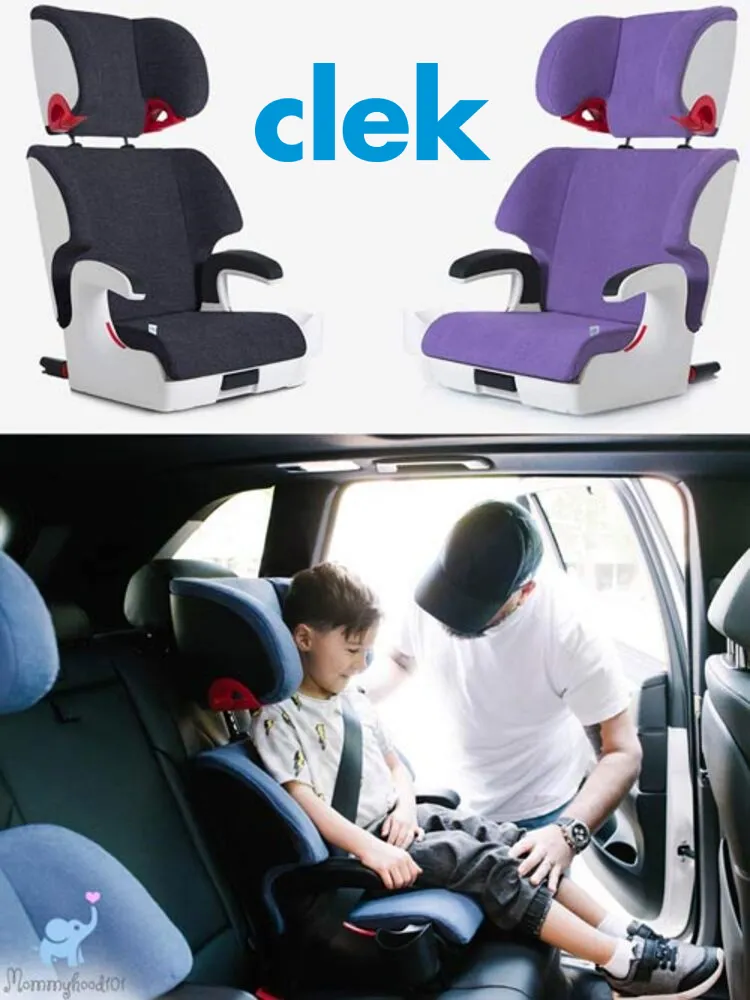
1. Clek Oobr Booster Car Seat
Our overall favorite, the Clek Oobr supports from 40-100 pounds and 38-57" tall using the vehicle's seat belt, as a belt-positioning high back booster. The Oobr can also be used as a backless booster from 40-100 pounds (and 40-57" tall). The seat itself weighs a beefy 20 pounds and is 18" wide at the base or 20" wide with a cup holder attached). Clek is based in Canada and has a strong reputation for quality, style, simplicity, and safety. We love Clek products, but they are definitely more expensive than most other options. The Clek Oobr booster seat is no exception: for safety, we loved the magnesium-reinforced frame, rigid lower LATCH anchors, side impact protection, EPP energy-absorbing foam, and belt guides. For comfort, we loved the adjustable recline, extensive headrest adjustments, comfortable fabrics, and the detachable cup holder. For peace of mind, we love Clek's dedication to sustainable and low-emissions fabrics, including never using chlorinated or brominated flame retardants, and the option for Merino Wool fabric (without any flame retardants at all!). In our testing, we absolutely loved trying it out! Clek uses relatively simple designs and excels in safety measures and quality. It's a confidence-inspiring seat with its laundry list of safety features and its stellar crash test results. It's not super narrow, but 18" isn't terrible for a booster seat width, especially given the relatively high weight limit of 100 pounds. We love booster seats with adjustable recline because it can help accommodate different vehicle seat pitches, but also allows older kiddos to recline their seat and booster to take a nap on longer drives.
Pulling it in and out of the car is a bit of a chore given its weight (20 pounds!), but the trade-off is the safety and structural rigidity of a reinforced frame. We'd take that trade-off any day! It's relatively rare for a reclining booster seat to also have a removable back, but the Oobr can be used as both a belt-positioning booster and bottom-only backless booster, which gives great versatility for a growing child. Installation was simple and we love rigid LATCH systems. As you likely know, the LATCH connections are only to help the booster from flying around the vehicle when not in use, they do not provide any additional safety for your child when they are seated properly. There are a couple of little downfalls with the Clek Oobr. First, the fabric cannot be removed for cleaning (spot cleaning only). Second, the rigid LATCH anchors cannot be used in most center seating positions due to the irregular anchor spacing. Finally, the bottom seat could be a little deeper and more padded. Aside from that, we love the safety and styling of the Clek, the fact that it's made in North America, and its overall simplicity. Who else loves the Clek Oobr? It is considered a Best Bet by the Insurance Institute for Highway Safety (IIHS), and is also a top pick by our friends at Babylist and Babygearlab. You can check out the Clek Oobr here!
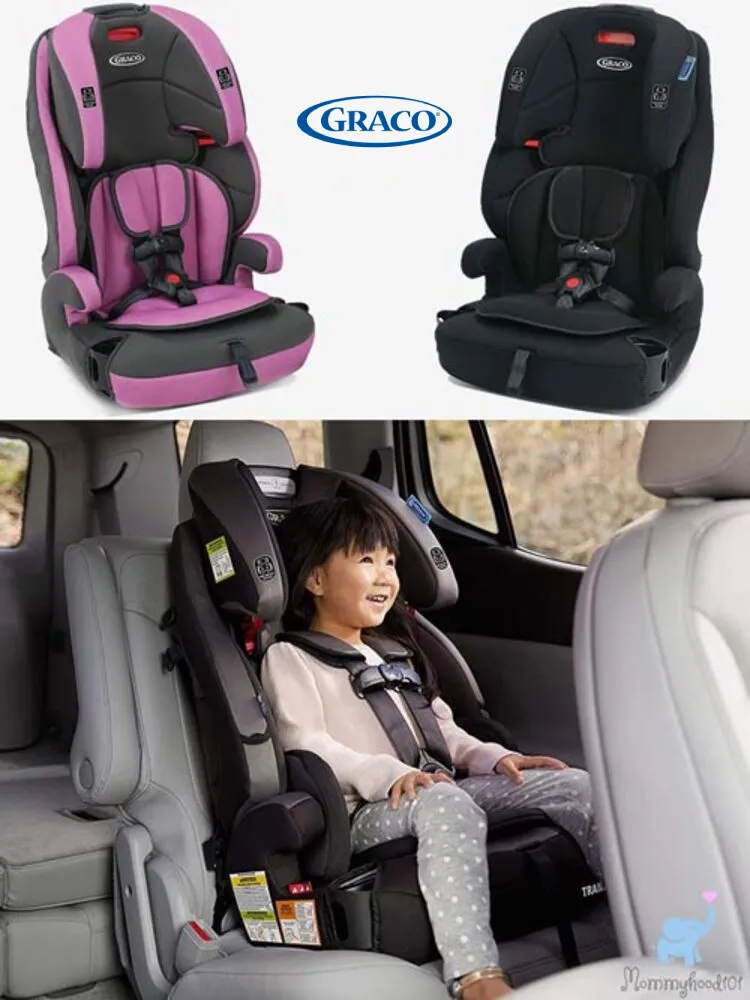
2. Graco Tranzitions 3-in-1 Booster Seat.
Looking for a combination harness booster that transitions all the way from a harnessed booster to a high-back booster, to a backless booster? How about without breaking the bank? The Graco Tranzitions does it all! In harness mode, the Tranzitions can support toddlers between 22-65 pounds and 27-49" tall, in the high back mode it supports 30-100 pounds and 38-57" tall, and in the bottom-only mode, it supports 40-100 pounds and 43-57" tall. The seat itself weighs only about 13 pounds and is 17.5" wide at the base, and comes in at only about $90! It comes with LATCH connectors, which can be used in harness mode until your child is 45 pounds, at which point you need to use the vehicle's seat belts for installation. Additional features include the Simply Safe Adjust Harness System that allows you to adjust the headrest and harness between 8 positions without rethreading, two cup holders, a removable and washable cover (and padding), side impact protection, and a blow-molded plastic energy-absorbing shell. The cup holders are slightly collapsible to help with tight seating situations. In our testing, we loved the soft body support pillows, easy LATCH or belt installation with intuitive guides, an easy-to-use belt positioner, the two crotch buckle positions, and the one-handed headrest and harness height adjustment.
Our test kids found it very comfortable, though one was a little disappointed that it couldn't be reclined along with the vehicle's seat. It was super lightweight and easy to move between vehicles, and it's reasonably narrow to help with back seat spacing. There's really nothing to complain about here, it's a truly fantastic booster, and we enjoyed trying it out. It was a bit difficult to get a tight installation when using the vehicle's seat belt, but this was helped a ton by the top tether (which you use in both harness mode and belt-positioning mode). Overall, this is an excellent and highly versatile harness booster with great convenience and safety features. The only thing we might ask for is a steel-reinforced frame, but of course, that would basically double its weight. Who else loves the Graco Tranzitions? The IIHS rates it as a Best Bet, and it's a top pick by our friends at Babylist and VeryWell Family! Interested? You can check out the Graco Tranzitions Booster seat here.
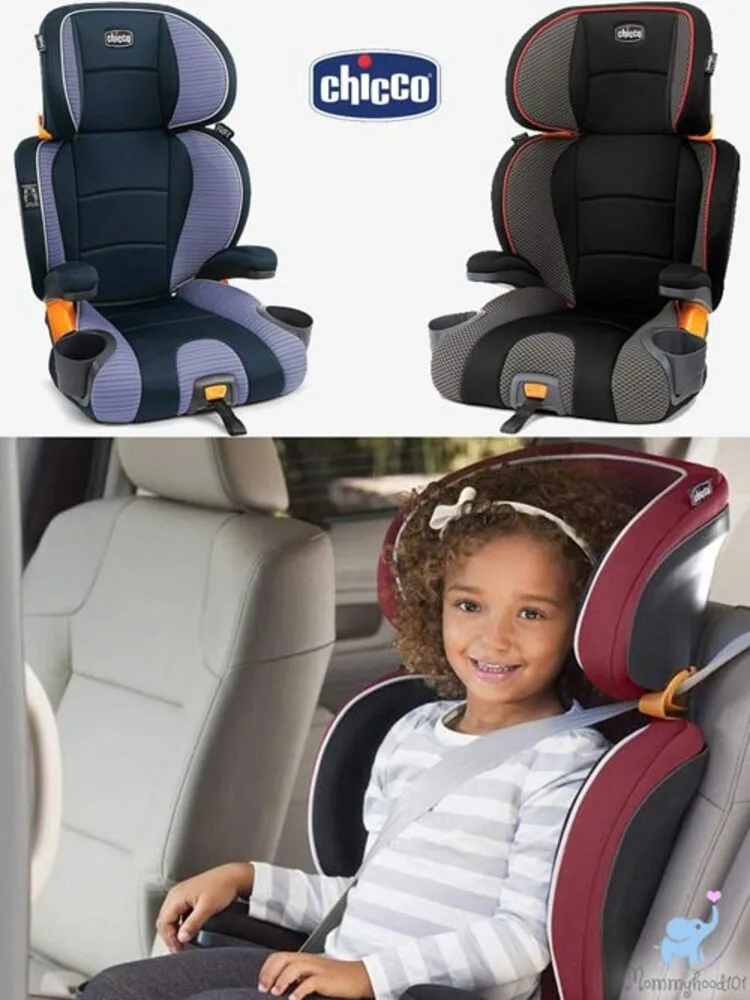
3. Chicco KidFit Booster Seat
The Chicco KidFit supports children from 30-100 pounds and 38-57" tall, using the vehicle's seat belt, functioning as a belt-positioning high back booster. It can also transition to a backless booster that supports kids from 40-110 pounds. The seat itself weighs 10 pounds and is 17" wide at the base (with the cup holder collapsed). From the KeyFit to the NextFit and the KidFit, we love testing Chicco products! They combine great features and safety while maintaining a reasonable cost. No, they aren't the most stylish or sophisticated booster seats, but they get the job done for a fraction of the cost. For safety, the KeyFit uses Chicco's DuoZone side-impact protection, shoulder and lap belt positioners and guides, and a LATCH system to keep the seat securely in your vehicle when unoccupied. It has two collapsible cup holders, two recline positions, a wide range of headrest height adjustments (10 positions!), and an easily removable cover for machine washing. In our testing, we found the seating surface to be very comfortable relative to most other models we've tested. During installation, we loved the LATCH system and its front-tightening mechanism - this is a really great feature that helps especially when you frequently swap the booster seat between vehicles. It does also have a built-in recline, which is nice for fitting more upright back seats (like in trucks or Jeeps), or relatively reclined ones like in sedans and SUVs.
Between its narrow frame and collapsible cup holders, this is one of the narrowest booster seats we've tested, coming in at just a hair under 17" wide at the base (the shoulder area is nearly 19" wide), making it a great option for cramped back seats (especially in backless mode). We found the fabric reasonably soft but durable, and easy to clean. For tougher cleaning situations, you can easily remove the cover and throw it in the washing machine. Negatives? Well, we thought the belt-positioner didn't always do a great job holding the seat belt in place, especially when the child unbuckles and lets the seat belt go flying upwards. Under those retraction conditions, it would sometimes pop out of the belt guide. More of an inconvenience than anything, but worth mentioning. Also, no steel-reinforced frame, though that certainly makes it lighter than the others, which many parents will appreciate. Overall, this is a great booster seat and we think your kid will love it! Who else loves the Chicco KidFit? It has great crash test ratings from Consumer Reports, and it's a top pick by our friends at Wirecutter, Babylist, and Babygearlab. You can check out the Chicco KidFit here!

4. Britax Grow With You ClickTight Booster Seat.
The Britax Grow With You is new for this year, replacing the discontinued Britax Frontier. You won't be surprised to learn that its specifications are very similar to the outgoing Frontier, supporting kids from 25-120 pounds and 34-63" tall. With the 5-point harness, it supports from 25-65 pounds (34-49"), and with a vehicle seat belt (as a belt-positioning high back booster) from 40-120 pounds (44-63"). The seat itself weighs about 25 pounds and is 19" wide at the base. As you know, Britax has a strong reputation for car seat safety, and its booster car seats are no exception. The Grow With You has two layers of side impact protection, uses the amazing ClickTight install system, has a SafeCell impact absorbing base, and uses a steel-reinforced frame. When in harness mode, you can use the included premium LATCH system for children up to 40 pounds, at which point you'll need to secure the seat using the vehicle's safety belt. Convenience features include the quick-adjust headrest and harness height, integrated cup holders, machine-washable cover, and adjustable incline. In our testing, every feature was easy to use and adjust, and the cushioning and fabric were soft and durable. We found the Grow With You to be extremely well built, one might even say over-engineered, and super solid and sturdy. Of course, all that safety and over-engineering comes at a cost - Britax booster seats are relatively expensive and heavy.
A combination harness booster is ideal for parents who are ready to graduate their child to a front-facing booster, usually around the age of 4 or 5, but want to retain the security and familiarity of a 5-point harness for a couple more years. While Britax says this can be used once your child is 2 years old and at least 25 pounds (and 34" tall), we strongly discourage the use of a harnessed booster before the age of about 4 years old, or a belt-positioning booster before the age of 5. In our testing, we loved the quick-adjust headrest and harness height (9 positions), two cupholders integrated into the seat (not dangling from the sides), the machine-washable cover, front-access incline adjustments (this was a great feature!), the intuitive level indicator, and the ClickTight lock-off system. We found the chest strap and crotch buckles really easy to use and had an audible click to give us confidence they were secure. We also liked the quality of the fabric, which was soft and comfortable while still being easy to wipe clean. Cons? Well, it's certainly heavy, large, and expensive! Outside of that, we love it - highly recommended! If you're looking for a similar booster without the 5-point harness capability, then check out the Highpoint (below). Who else loves the Britax Grow With You? The IIHS calls it a Best Bet, and it's a top pick by our friends at Car Seats for the Littles (CSFTL). Interested? You can check out the Britax Grow With You Booster Seat here.
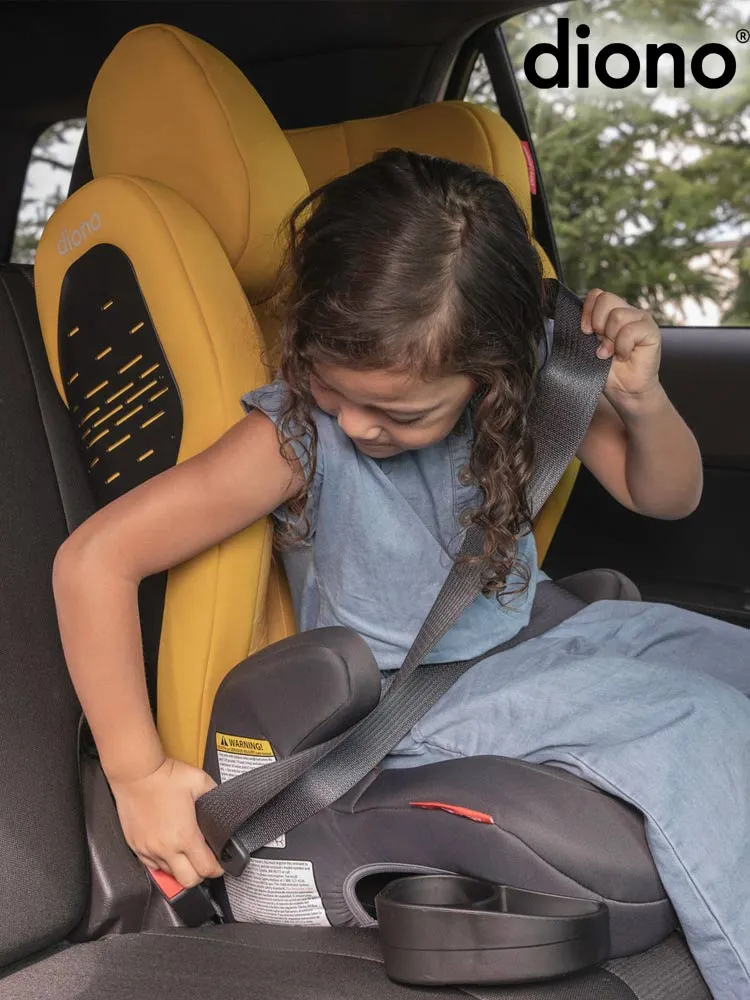
5. Diono Monterey 4DXT Booster Seat
This beautiful Diono Monterey 4DXT booster is a relatively new release from Diono, expanding upon the original Monterey that we know and love. For basic specifications and features it accommodates children from 40 to 120 pounds (about 4-12 years old), has 11 quick-adjust headrest positions, expandable torso width, LATCH connectors, four layers of side impact protection surrounding the head (with energy-absorbing foam), shoulders, and torso, and converts from a belt-positioning high back booster to a backless booster. Relative to the original Monterey booster, Diono has upgraded the seat in 15 ways, including the fabrics, airflow, side impact protection, and comfort. This evolution of the Monterey has taken their booster from good to great, and we were happy to get our hands on it for testing!
Out of the box, the Monterey 4DXT felt high quality and robust - the fabrics were durable yet soft, the plastics were sturdy, and the entire car seat felt very well constructed, large (up to 20.5" wide), and heavy (nearly 19 pounds). That's not entirely surprising - Diono is known for making very high-quality, safe, and stable car seats, and the Monterey is no exception. Installation was a breeze using the LATCH connectors to secure the booster to the car, and we loved the range of adjustability. The torso and shoulder supports are adjustable in width with nearly 10" of range, supporting a very wide range of child growth trajectories. The headrest also adjusts across a huge range to accommodate taller kids, and the two cupholders (one on each side) can be folded in and out. The torso width and headrest adjustments were intuitive and one-handed. The seat has nice contours for the legs to keep things comfortable on longer drives, the armrests are nicely padded and at a good height, and we love the venting to increase airflow along the torso and shoulders. The new Monterey also has a machine washable (but line dry) cover, but we highly recommend their Ultra Mat car seat protector (which is often included with this seat). The only con is the seat uses traditional hook-style LATCH connectors rather than quick-connect, but realistically, they are only for holding the seat in place while it's not in use, so this isn't a big deal. The biggest drawback is the very limited availability. Who else loves the Diono Monterey booster seats? It passes Consumer Reports crash tests, is a Best Bet according to the IIHS, and our friends at Wirecutter and Babygearlab call it a top pick! Interested? You can check out the Diono Monterey 4DXT here.
6. Graco Highback TurboBooster Car Seat.
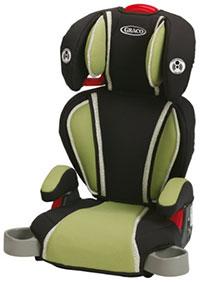
The Graco Highback supports children from 30-100 pounds and 38-57" tall, as a belt-positioning booster. It can transition to a backless booster as well, supporting children from 40-100 pounds and 43-57" tall. The seat itself weighs only about 8 pounds and is only about 16.5" wide at the base. This is definitely one of the best options for fitting three car seats in a row, given its relatively narrow stance of about 16.5" wide; it's also very lightweight so it's perfect for swapping between vehicles. Did we mention how inexpensive this is, coming in at only about $50!? Features include side-impact protection, EPS energy-absorbing foam, adjustable headrest height (6 positions), two cup holders that flip in/out, belt positioners, and reasonably soft and cushioned fabric.
It has some pretty good bang for the buck given that it converts to a backless booster, is reasonably comfortable, and is super durable and long-lasting. Given the price, the dislikes are pretty minor - yes, it is a relatively barebones booster, without the LATCH system or a steel-reinforced frame. But for this price, we think it's a fantastic option with surprisingly high-quality fabrics and components. If you really want the LATCH to help secure the booster to the vehicle, we suggest checking out the Graco Affix, below. Who else loves the Graco TurboBooster? It passes Consumer Reports crash tests, is considered a Best Bet by the IIHS, and is a top pick by our friends at Babylist and VeryWell Family. Interested? You can check out the Graco High Back TurboBooster here!
7. Britax Highpoint Booster Seat.
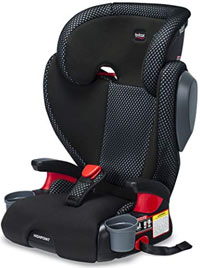
The Britax Highpoint supports children from 40-120 pounds and 38-63" tall, using the vehicle's seat belt (as a belt-positioning booster). It converts to a backless bottom-only booster to support kids from 48-120 pounds. The seat itself weighs about 13 pounds and is 21.5" wide at the base. The Britax reputation for safety makes their booster seats stand out against the crowd. This Highpoint booster seat has 3 layers of side impact protection and uses a series of bright red guides to help you figure out how to position and adjust the seat and seat belt for optimal safety. The side impact protection has layers by the head, at the shoulders, and behind the shoulders. It includes lower LATCH anchors to keep the booster seat attached to your car when not in use and uses awesome Cool Flow fabric that is highly breathable and does a great job preventing sweaty backs. It also has an easily adjustable headrest that goes very high (10 settings) without making a gap in the back, two large cup holders, and a great weight range.
For safety, it includes EPP energy-absorbing foam, side-impact wings and external side-impact bolsters, and a lower seat belt positioning guide that helps with installation and making sure that the seat belt is positioned appropriately on your child's waist. For convenience, it has two removable cup holders, a LATCH tightening system, removable and washable fabrics, and optional Cool Flow fabric. We loved testing this car seat and think it's a truly amazing addition to our list! Yes, it's expensive, but it also has tons of safety features and fantastic durability and versatility. The only thing it's missing is a steel-reinforced frame, but that helps keep it from tipping the scales over 20 pounds. Overall, we love it, but it's certainly a splurge! Who else loves the Britax Highpoint? It's a Best Bet according to the IIHS, and a top pick by our friends at Car Seats for the Littles. Interested? You can check out the Britax Highpoint here!
8. Graco AFFIX Booster Seat with LATCH.
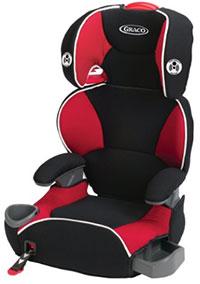
The Graco Affix supports children from 30-100 pounds and 38-57" tall, using the vehicle's seat belt (as a belt-positioning booster). Can also be used as a backless booster for children 40-100 pounds and 40-57" tall. The seat itself weighs only about 9.5 pounds and is only 16.5" wide at the base. You might be surprised to learn that this is the exact same booster seat as the TurboBooster, but with the addition of LATCH connectors. These can help secure the booster to the vehicle while it is not in use. Everything else is the same as the TurboBooster, including side impact protection, high-quality and soft fabrics that we found easy to clean, and two cup holders (one for holding cups and one for other stuff).
It's lightweight and narrow, making it an ideal booster seat for tighter installations and for easily swapping between vehicles. This seat has some nice versatility, allowing for use as a belt-positioning booster seat or a backless booster seat for taller kiddos. All the same pros and cons apply to the Affix as with the TurboBooster, other than the addition of the LATCH. Who else likes the Affix? The IIHS calls it a Best Bet, it has great crash ratings from Consumer Reports, and it's a top pick by our friends at VeryWell Family. Interested? You can check out the Graco Affix here!
9. Chicco MyFit Harness Booster Car Seat
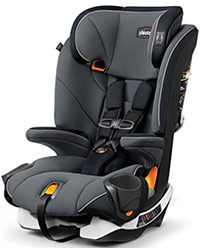
The Chicco MyFit supports children from 25-100 pounds and up to 57" tall. When used with the 5-point harness it supports from 25-65 pounds and up to 54" tall, and as a belt-positioning booster it supports from 40-100 pounds (and 38-57" tall). The seat itself weighs about 25 pounds and is 17.5" wide. As one of the few combination booster car seats on our list, the Chicco MyFit can convert from a car seat with a 5-point harness to a belt-positioning high-back booster seat, giving it some great versatility. The build quality is superb, and we loved the soft-touch fabrics and plastics, ample cushioning, and easy-to-use adjustments and buckles. For safety, it includes bubble-leveling, side-impact protection, a steel-reinforced frame, shoulder belt lock-off, and EPS energy-absorbing foam. For convenience, it has a no-rethread harness, wide headrest height, adjustable recline, removable and dishwasher-safe cup holders, and comfortable armrests. The cover was easy to remove and wash, and the seat felt very safe and secure when installed with the LATCH or the vehicle's safety belt.
Our test kids found the Chicco to be one of the most comfortable booster seats they've tried, with its relatively deep seat, adjustable recline, and substantial padding. The price is somewhat steep coming in at about $150-200 depending on color. It's also heavy, thanks to the steel-reinforced frame, making it more difficult to swap between vehicles or lug through an airport. That weight also means that using the LATCH is limited to a child up to 40 pounds, at which point you'll need to transition to the vehicle's seat belt. The only other little issue we found is that some of the buttons for the harness release and headrest height adjustment are a little flimsy, but we never had any issues with any breakage or failure. Overall, the Chicco MyFit is very deserving of a spot on our list, and we think you'll love it! Who else likes the Chicco MyFit? The IIHS rates it as a Best Bet, and it is also a top pick by Consumer Reports. Interested? You can check out the Chicco MyFit here!
10. WAYB Pico Booster Seat.
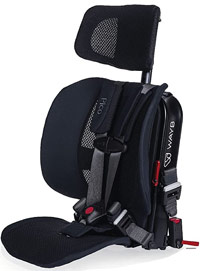
The WAYB Pico booster is one of several super portable booster seats designed for travel, but the Pico is a bit different in a few ways. First, most super portable booster seats are bottom-only, and only a few are high-back. But the Pico is a full five-point booster seat with excellent installation options: it can be installed with only a lap belt (like on an airplane, bus, or in a vintage car), a lap and shoulder belt, or using the LATCH system. Second, the WAYB Pico has a surprisingly high weight limit of 50 pounds (minimum 22 pounds) and height limit of 45" (minimum 30"), while maintaining a super lightweight construction of only 8 pounds! The cool part is that you can use the LATCH for the entire time since the booster itself is so light (i.e., you never reach the LATCH weight limit).
In our testing, we loved how lightweight, portable, and versatile this booster seat is. It folds up and fits easily into the WAYB travel backpack (included). When you're ready to use it, it unfolds (flip it, lock it!), adjusts, and installs very quickly, especially if you're using the included (push-button) LATCH connectors. It's the perfect size for children aged about 3-4 years old. The harness height isn't adjustable, so in our opinion, the shoulder harness height seems a little high for a small 2-year-old, and a little low for a tall 5-year-old. The crotch buckle isn't adjustable and we found that it sits a little low, especially for kids with thicker thighs, which can make buckling and unbuckling a little uncomfortable. Speaking of comfort, there are a few pros and cons. As a pro, the lightweight and high airflow fabrics make this a perfect car seat for warmer settings, offering excellent ventilation to keep your child's back nice and cool. But as a con, there basically is no padding on the bottom and minimal bolstering on the sides of the torso or head. This makes it less comfortable for longer drives or for napping than a typical booster car seat with thicker padding and side impact bolsters. Of course, we need to remind ourselves that this car seat weighs only 8 pounds and is basically a superstar travel booster (did we mention that it's only 14.5" wide!?). Perfect for the jet-setting family, but you'll pay for all the convenience - over $400 to be exact! It may be obvious, but it's FAA-approved (with a sticker) and meets all federal safety standards. Interested? You can check out the WAYB Pico here!
A Brief Booster Seat Buying Guide
Booster vs. Combination Car Seat: What’s the Difference?
Choosing between a regular booster seat and a combination harness booster seat can be confusing. Here’s what you need to know:
Regular Booster Seat:
- Uses the vehicle's seat belt to secure the child.
- May include a LATCH system to keep the booster secured to the car when not in use (to prevent it from moving during sudden stops).
- Lacks a built-in 5-point harness system.
- Designed for children over 40 pounds and at least 38 inches tall.
Combination Booster Seat:
- Features a 5-point harness for smaller children.
- Transitions to a belt-positioning booster, utilizing the vehicle's seat belt as the child grows.
- Sometimes called a "2-in-1 booster," "harness booster," or "harness2booster."
- Ideal for parents transitioning directly from an infant car seat to a forward-facing seat that can later be used as a booster.
If your child weighs less than 40 pounds and is shorter than 38 inches, consider a convertible car seat instead of a booster seat. Convertible seats typically offer more padding, better support, and recline options.
Why Choose a Booster Car Seat?
Skipping a booster and transitioning directly to the vehicle's seat and seat belt is not recommended by the National Highway Traffic Safety Administration (NHTSA).
Boosters ensure proper positioning of the lap and shoulder belts to reduce injury risks due to:
- Improper Lap Belt Fit: If the lap belt is too high, it increases the risk of abdominal injuries during a crash.
- Improper Shoulder Belt Fit: If the shoulder belt is too high, it can press against the neck instead of resting on the shoulder.
For smaller children, a high-back booster provides better shoulder belt positioning. For taller children (typically over 45 inches), backless boosters can be used.
Ease of Use
As your child transitions to a booster seat, ease of use becomes increasingly important since they will likely be buckling and unbuckling themselves without help.
Here are some features to consider for ease of use:
- Simple buckle mechanisms.
- Easy access to buckles.
- Proper shoulder belt positioning for safety, comfort, and independence.
- Some boosters include LATCH systems to keep the seat secured when not in use, preventing it from becoming a projectile during sudden stops or accidents.
Safety Standards and Ratings
All booster seats sold in the USA typically meet the NHTSA's safety standards, but some go above and beyond with features like:
- Multiple or thick layers of side-impact protection.
- Steel-reinforced frames.
- Advanced energy-absorbing foam.
Here are some key safety evaluations to look for:
- The Insurance Institute for Highway Safety (IIHS)Identifies “Best Bet” booster seats that ensure proper fit and safety.
- Consumer Reports conducts crash tests and rates car seats based on structural integrity during impacts.
Price and Value
Booster seats are generally more affordable than convertible car seats, with prices ranging from about $50 for simple options to $300 for high-quality options. Premium models offer additional features, such as:
- Plush, soft fabric.
- Lightweight construction.
- Enhanced safety features.
It’s worth noting that higher price tags don’t necessarily equate to better safety. Proper installation is the most critical factor in ensuring your child’s safety, in addition to following the manufacturer’s instructions.
Child Weight and Height Guidelines
The U.S. government recommends booster seats for children:
- Weighing at least 40 pounds.
- Standing at least 38 inches tall.
- Up to approximately 12 years old or 60 inches tall.







